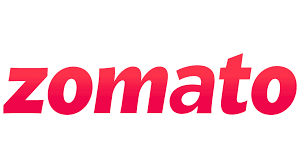SUMMARY POINTS
- Zomato shuts down ‘Instant’ and ‘Everyday’, its fast-food and tiffin-style 15-minute delivery verticals.
- The decision follows challenges in unit economics, consumer adoption, and operational scale.
- Company refocuses on core food delivery and profitability goals.
- Quick-commerce landscape faces correction as several players scale back.
- Blinkit, Zomato’s grocery arm, remains unaffected and is growing.
Zomato has officially pulled the plug on ‘Instant’ and ‘Everyday’, its experimental offerings that promised meals in 10–15 minutes. The shutdown reflects a deeper shift in India’s quick-delivery segment.
Both services, launched with much fanfare, are no longer available on the app. Zomato executives confirmed that the projects were shelved due to limited traction and lack of sustainable margins.
What Were ‘Instant’ and ‘Everyday’?
- Zomato Instant launched in early 2022 with a promise to deliver hot meals within 10–15 minutes from centralized kitchens.
- Zomato Everyday, launched in 2023, offered affordable “home-style” meals—mostly priced under Rs 99—to office-goers and students, also within 15 minutes.
Despite pilot rollouts in select metros like Delhi and Gurugram, both verticals struggled with scale and consistency.
ALSO READ: D2C Reset in India: Eternal’s Weak Q4 vs Sauce.VC’s Sharp Strategy
Why Did Zomato Shut It Down?
Zomato cited multiple reasons for discontinuing these services:
- Low repeat usage compared to standard restaurant orders.
- High cost per delivery due to logistics, despite tighter zones.
- Limited order volume per location made it hard to achieve economies of scale.
- Consumer preference for variety over standardised meal boxes.
One insider noted, “The operational intensity for 15-minute food is just not worth it, unless the volumes are massive—which they weren’t.”
Strategic Reorientation: Focus Back on Core
Zomato is now doubling down on its core restaurant delivery, which has returned to profitability in recent quarters.
This move aligns with:
- Its larger strategy to cut non-core experiments and focus on sustainable growth.
- Preparing the ground for Blinkit’s expansion, which remains Zomato’s only strong play in quick-commerce.
- Easing cash burn and streamlining workforce allocation post-pandemic.
Market Context: India’s Quick Commerce Faces Reality Check
Zomato isn’t alone. Quick-commerce players across sectors are reassessing their models:
- Dunzo recently laid off staff and scaled back city operations.
- Zepto has narrowed its expansion plans, focusing only on high-density zones.
- Even Swiggy Instamart has slowed down warehouse rollouts.
The core challenge? Profitability and consistency in a segment driven by speed but not always by logic.
ALSO READ: 7 Simple Ways to Build Trust at Work — With Your Team and Leaders
What Does This Mean for Users and the Industry?
- For Zomato users: You’ll still get fast food, just not in 10 minutes.
- For founders and investors: The focus is shifting from gimmicks to unit economics and long-term viability.
- For the industry: Expect fewer moonshot bets and more consolidation.
Zomato’s exit from the 15-minute meal race is not a failure—it’s a signal. Speed alone doesn’t win in foodtech. Value, reliability, and profitability do.



